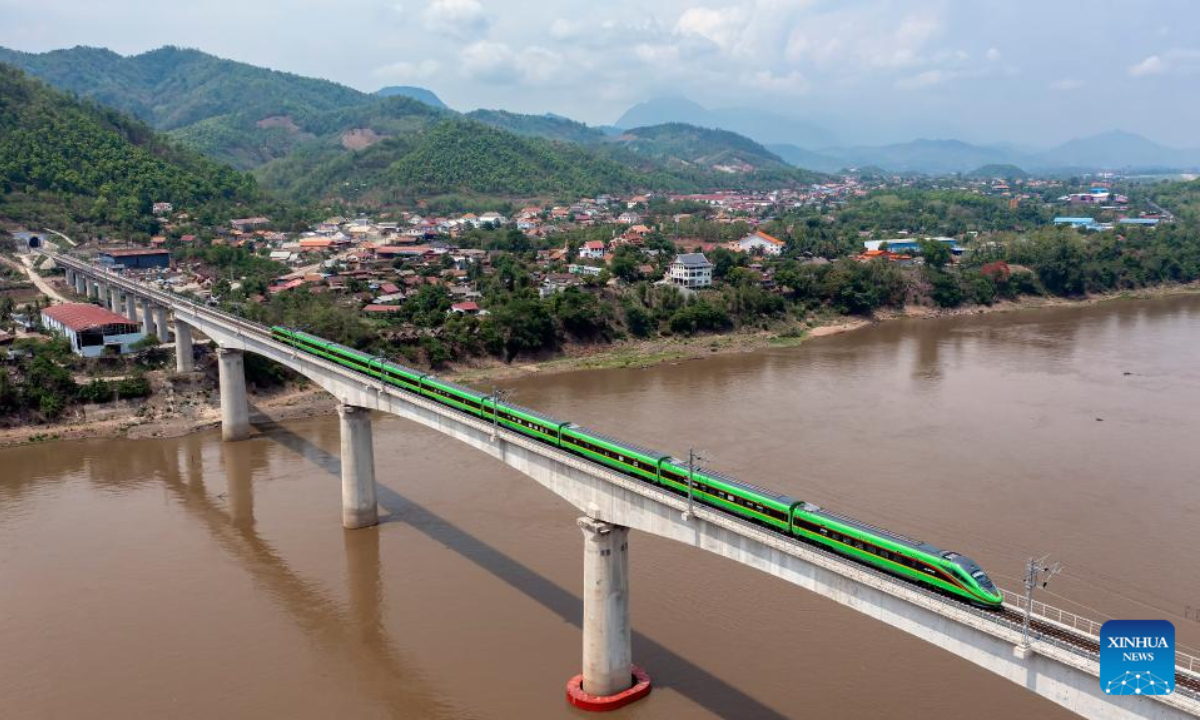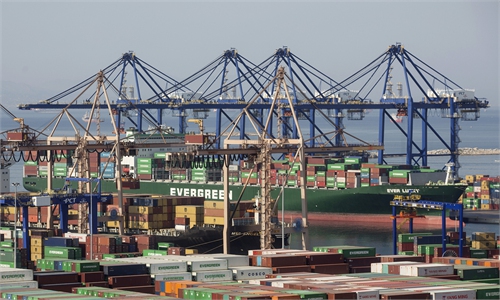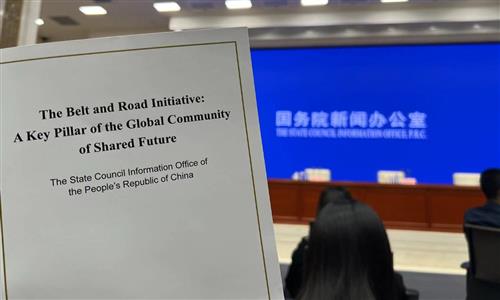Closer infrastructure connectivity among BRI participating countries is taking shape: Chinese official

A train drives on the China-Laos Railway's Luang Prabang cross-Mekong River super major bridge in Laos, May 28, 2023. The bridge, some 230 km north of Lao capital Vientiane, has a total length of 1,458.9 meters and is composed of 28 span T-beams and six spans continuous beams. It is the most difficult and most technically complex bridge on the entire railway. Photo:Xinhua
Ten years on, China has yielded tangible and substantial achievements with the participating countries of the Belt and Road Initiative (BRI), Cong Liang, deputy head of the National Development and Reform Commission, told a press conference addressing the publication of a white paper on the BRI on Tuesday.
Cong cited a number of landmark infrastructure connectivity projects that have been completed and entered operation under the BRI in the past 10 years, including the China-Laos Railway, the Jakarta-Bandung High-Speed Railway, the Hungary-Serbia railway and the Piraeus Port.
The China-Europe freight trains have established a new logistics channel between Asia and Europe, an international shipping route network under “Silk Road Shipping” has spread all over the world. Based on a framework comprising "six corridors, six routes, and multiple countries and ports," a multi-tiered and multidimensional infrastructure network is taking shape, Cong noted.
In 2015, China puts forward the vision of building six major international economic cooperation corridors, including the New Eurasia Land Bridge Economic Corridor, the China-Mongolia-Russia Economic Corridor as well as the China-Pakistan Economic Corridor.
In recent years, the construction of these international economic cooperation corridors has achieved remarkable results, especially the efforts to promote the construction of international backbone corridors together with partner countries, and to build an infrastructure network connecting various regions in Asia and between Asia, Europe and Africa, Cong noted.
Cong cited the China-Laos Railway as an example. Since its opening in December 2021, a total of over 20.9 million trips have been made and 25.36 million tons of cargo has been transported via the railway by early September.
A total of 25 provinces in China have opened international freight trains on the China-Laos Railway, covering Laos, Thailand, Myanmar, Malaysia, Cambodia, Singapore and other countries, significantly increasing economic and trade exchanges between the two countries and strengthening economic and trade cooperation between China and ASEAN. In terms of connectivity, the China-Laos Railway has made Laos a truly "land-linked country", enabling more products to be transported easily and quickly between China, ASEAN and European countries.
In addition, the China-Laos Railway has employed more than 3,500 Lao employees since its commencement, creating more than 100,000 jobs to the Laotian logistics, transportation, trade and tourism industries. The railway also provides new opportunities for ASEAN to better utilize the new advantages of the entry into force of the RCEP and build a closer regional industrial chain and supply chain, Cong added.
In terms of the economic and trade cooperation under the BRI, Guo Tingting, vice commerce minister said that from 2013 to 2022, China's total trade with countries along the route reached $19.1 trillion, with an average annual growth rate of 6.4 percent; two-way investment exceeded a cumulative total of $380 billion, with China’s direct investment to those countries exceeding $240 billion.
“In addition, we have organized a series of regional exhibitions including China International Import Expo and China Import and Export Fair, which have promoted economic and trade cooperation among the countries participating in the construction of the BRI,” Guo noted.
In the future, China will actively promote accession to the CPTPP and DEPA, and also support Hong Kong and Macao enterprises to participate in the joint construction of the BRI and create an important functional platform. China will deepen cooperation in areas such as the green economy and digitalization, so as to achieve sustainable development together with partner countries, Guo said.
Global Times


